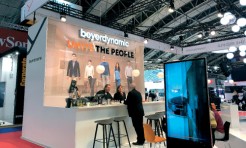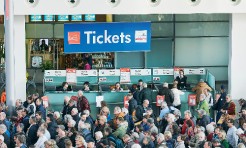Singapore: A tool to strengthen the industry
The
Covid-19 pandemic is a huge challenge for the MICE industry worldwide. To
confront this challenge, the city state has created a roadmap.

The fundamental objective of the Event
Industry Resilience Roadmap (IRR) is to balance health considerations, which
remain paramount, with the need to support the resilience of Singapore's
MICE industry. The roadmap was co-created by the trade association for MICE and
Events in Singapore, SACEOS, Singapore Tourism
Board (STB) and Enterprise Singapore.
The authors underline that, as they move through these uncertain times
together, they will continue to update the roadmap. IRR is like a tool: It aims
to empower and strengthen MICE enterprises to operate successfully over the
coming months and years.
The first edition of the 100-page Event
Industry Resilience Roadmap contains two central elements. The first is a
safety guideline for organisers, venues and suppliers: “SG SafeEvent
Standards”. These standards are to help event practitioners implement STB’s
prevailing Safe Management Measures for MICE Events (www.stb.gov.sg). They
include checklists and model case studies. Pilot events are under way to put these
standards into practice, said SACEOS President Aloysius Arlando at the launch
of the roadmap. These pilot events will, so he says, provide us with data
points and rich insights so that events of a varying scale can be carried out
in a safe and responsible manner.
TravelRevive is the first pilot exhibition
to trial the newly developed “prototype” for safe business events, safe
itineraries and digital implementation. The live event - organised by Messe Berlin and STB - brings the travel industry together at
Marina Bay Sands Expo & Convention Center from 25 to 26 November. Its aim
is to exchange ideas, bridge knowledge gaps and reimagine the future of travel.
This prototype is to provide delegates with the degree of interaction they
would be accustomed to in a regular trade show setting — but in a far safer way
which minimises infection risks (www.itb-community.com/travel-revive).
Back
to the Event Industry Resilience Roadmap: Its second focus is on hybrid events
and their potential benefits: an extended event lifetime, extended reach and
new sponsorship opportunities. Among other things, the essential elements and
pillars of hybridisation are presented. Links are also provided to supporting
institutions: private-sector hybrid event tech providers and government
agencies (www.saceos.org.sg).
Author: Peter Borstel
This article was published in TFI issue 3-4/2020
Share in Facebook, Twitter or Google+:
TFI - Trade Fairs International - The International Trade Fair Magazine.
© 2006 - 2024 by TFI-Verlagsgesellschaft mbH. All rights reserved. TFI-Verlagsgesellschaft mbH shall accept no responsibility for the contents of external links and other contents.
TFI-Know-how
-
What to do when things go wrong at virtual or in-person events?

In the event world, it’s simply part of life if things don’t work out as planned.
-
How can networking be made to work at online events?

Networking typically happens at real, in-person events. But it’s also possible to do it online; it just works a little differently. There are various options available to organisers.
-
How can exhibitors stand out at trade fairs?

New products and a well-conceived stand design are not the only drivers for a successful presence. Many other factors are also important, but trade fair planners often lose sight of them.
-
How can industry decision-makers be reached online?

Trade fairs and trade fair companies need to constantly further develop, become more agile and flexible and offer services all year round. New, digital offerings are very important here. With its TrustedTargeting technology, Messe München offers its customers access to leading business-to-business decision-makers on the Internet.


